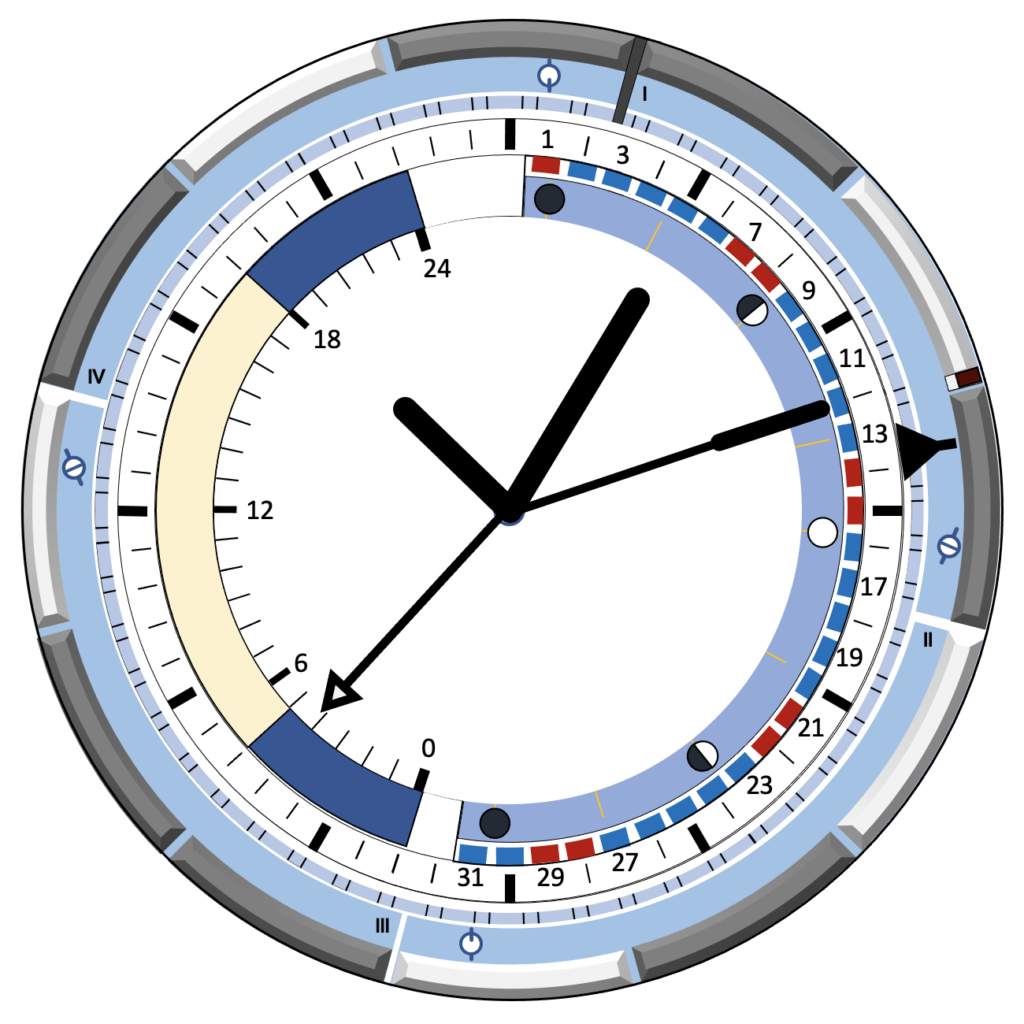The first and direct purpose of a watch is to provide information about time.
Because time is organized in cycles, watches can provide a range of data to describe it.
Nevertheless, cramming a set of values in a watch dial and still let it be pleasant to look at, or even easily readable, is not easy.
Here, I will look at the characteristics that make a good dial great and then propose an extreme case to explore the limits of what’s possible.
An advanced watch dial design can be sophisticated but should not be convoluted.
Even if the information is rich, its complexity must not be an excuse for lack of care in the disposition and the information must be showed in a way that the larger scheme gives intuitive meaning to the individual figures.
This proposal is based on these design principles:
- We will try to unify scales (and possibly merge them), reduce the quantity of written numbers, and avoid text labels.
- All dials should show values growing in the same direction (i.e. clockwise).
- More important or useful information should be a in bigger and central area. Secondary information should take little space and be relegated to lesser positions.
- Bigger sets of things (more elements) should go to the outside, because there is more linear space to display it.
Also, a different organization of the dials will impact how the mechanisms work. Hopefully we could make more gains over there, but that is material for another post.
Proposal
Sticking to what everybody expects in a watch, we will start with a round shape, hands mainly in the center.
Remember, we tend to divide a circle either in 12 or 60 parts. Now, let’s organize the different timescales in layers.

Year
Luckily, we tend to divide the day in 12 hours (twice), which is also the number of months in the year.
That’s a great opportunity to merge dials, so we’ll make a whole turn worth a year. There will be 12 sectors, which will be slightly different according to the month’s length (dark: 31 days, light: 30 or less). The dial will be tilted a few degrees to reflect the center of each month with the hour, so the first day of the year will be at 5° approx.
The year in the 4-year leap-year cycle will be reflected by a mark at the end of the second month (February).
Month
The right-hand half of the dial will show the days of the month, matched with the minutes (scale 1 / 31). This part of the dial will be sided by a scale showing the split of the weeks (weekday / weekend). The phases of the moon will be placed alongside.
Day
The left-hand part will show the day in 24h, along with sunrise / sunset indication. Finally, a pair of traditional 12h central hands will give the exact time
Summary
With this dial design we manage to indicate:
- Year
- Position of the day in the year (with indication of length of month)
- Position of solstices and equinoxes
- Position of week in the year
- Quarter #
- Position of year in 4-year cycle
- Month
- Day of month (date)
- Day of week (day)
- Position in Moon cycle
- Day (24h)
- Sunrise / sunset
- Time in hours
- Regular time

